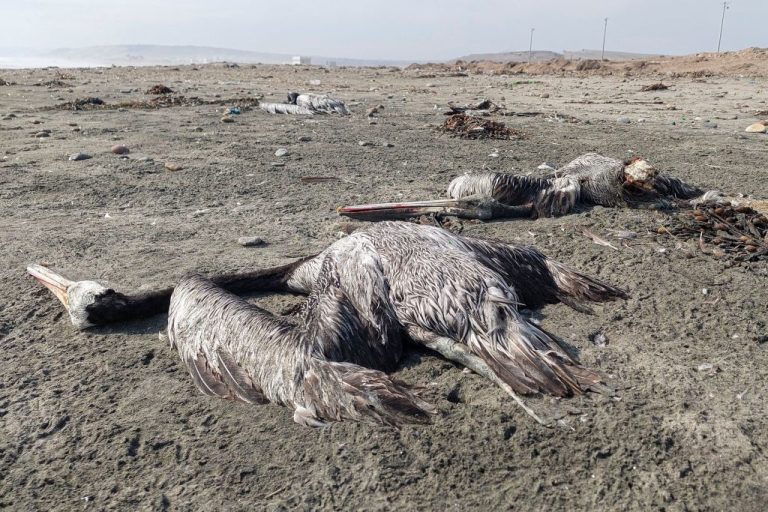Experts are raising the alarm after the recent detection of bird flu in mammals, including foxes, otters, minks, seals, and grizzly bears. However, they say that a suspected new strain of the disease would have to mutate significantly for it to spread to humans.
Europe has been grappling with its worst-ever outbreak of bird flu since late 2021, and both North and South America are managing outbreaks that have been partially blamed for an egg shortage and rise in prices.
The outbreaks have led to tens of millions of domestic poultry, many infected with the H5N1 strain, to be culled, and is said to be responsible for an untold number of wild bird deaths.
Tom Peacock, a virologist at the Imperial College London, told AFP that the crisis is a “panzootic,” or a pandemic among animals and birds.
Peacock is not certain what is driving the crisis, however suspects that a slightly different strain of H5N1 may be spreading among wild and migratory birds.
Success
You are now signed up for our newsletter
Success
Check your email to complete sign up
It is rare for bird flu to jump to mammals, and rarer still for humans to become infected. But as of late, several mammals have been diagnosed with or died from the disease.
On Feb. 2, the UK Health Security Agency announced that a fox had recently tested positive for the disease. Last year, eight foxes and otters tested positive for the disease, all of which had a PB2 mutation, Science Alert reported.
Pandemic among humans?
According to Peacock the mutation is allowing the virus to “replicate better in mammalian cells,” but that more mutations would be required for the disease to cause a pandemic among humans.
His comments follow a recent announcement by France that a house cat was put down after testing positive for bird flu and last month Montana’s parks service said three grizzly bears with the disease were put down as well. All the animals were suspected of consuming infected birds.
Last October, a Spanish farm culled more than 50,000 minks that had been exposed to H5N1 with the PB2 mutation, raising more concerns that the disease could mutate and become more transmissible among mammals. However, to date, transmission between minks has not been confirmed.
Last month, the mass death of an estimated 2,500 endangered seals, found along the coast of Russia’s Caspian Sea, also raised concerns that the mutated virus could be the culprit.
Alimurad Gadzhiyev, a researcher at Russia’s Dagestan State University, said recently that samples from the seals “tested positive for bird flu,” but stopped short of concluding the virus caused the die-off.
Mixed reports have surfaced concerning the seals that could have contracted the disease by eating wild birds. Peacock said if this was to be confirmed, it “would be yet another very concerning development.”
READ MORE:
- Thousands of Pelicans Die in Peru After Bird Flu Outbreak
- China Says H3N8 Bird Flu has Jumped to Humans
- Avian Flu Killing Poultry in Canada and the US, Accelerating Food Shortages
Expert urges caution
An infectious disease specialist at the London School of Hygiene and Tropical Medicine, David Heymann, is urging caution, saying that the increase in the disease being detected in mammals may be due to more testing, and telling AFP, “This may have been going on for years and nothing has really occurred.”
He added that it is concerning when bird flu crosses over to mammals “because they’re often the mixing point of influenza viruses, or they create an environment where mutations can occur and then can become adapted in humans.”
However, Heymann believes the risk to humans remains low and that Europe and North America have developed robust surveillance systems and have invested significant resources in studying the virus since it emerged in China and Hong Kong in 1996, and that current seasonal flu vaccines could be easily updated to address any future mutant strain.
There has only been 868 confirmed H5N1 cases in humans over the past two decades with 457 deaths, according to the World Health Organization (WHO). Last year there were four confirmed cases and one death.
In January, Ecuador announced its first case of human infection in a nine-year-old girl who is suspected to have caught the disease through contact with backyard poultry.
Experts are calling for continued surveillance of the disease in wild birds, poultry, and mammals in order to limit exposure to humans.







